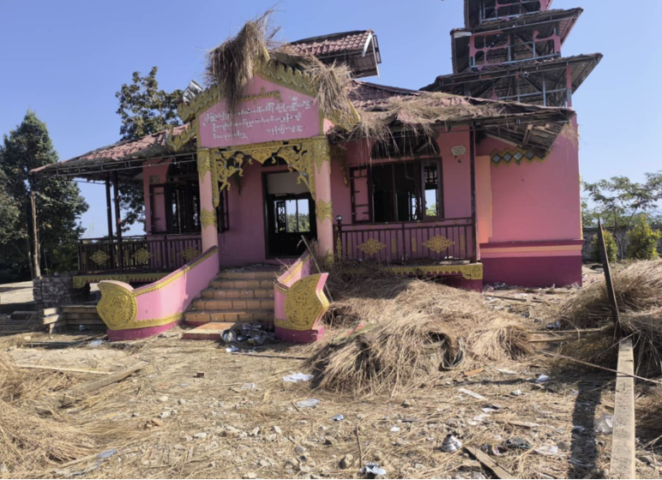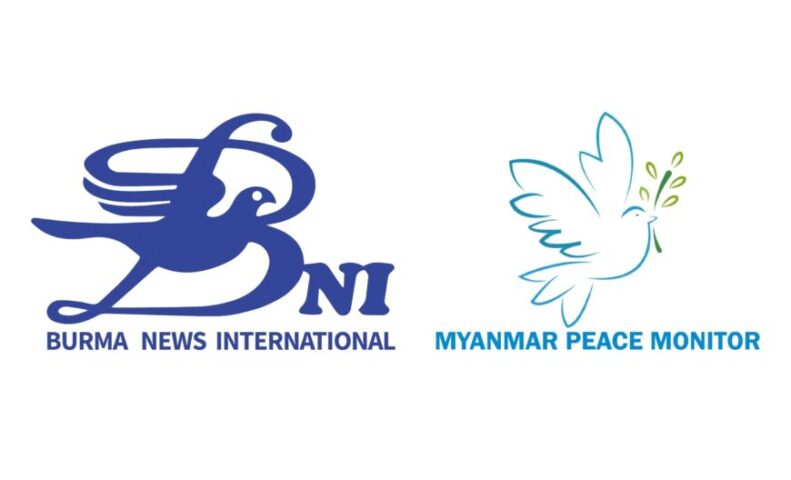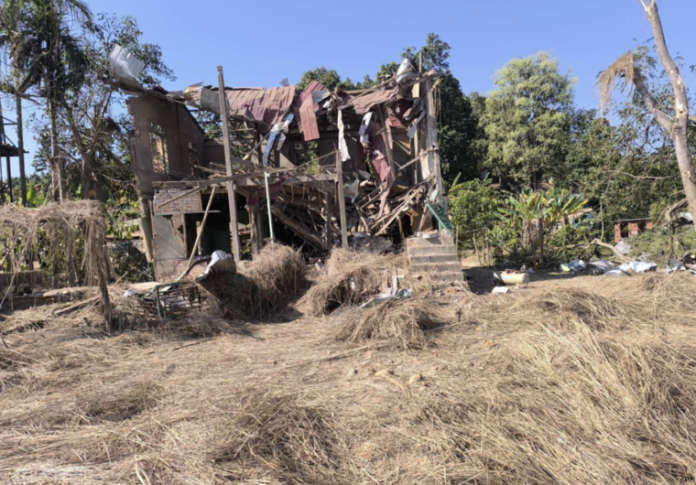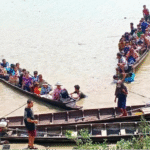An interview with a local resident of Khampat about the aerial bombings and the current situation.
The military council launched airstrikes on Khampat, a town held by the National Unity Government (NUG), situated between Tamu and Kale in Sagaing Region near the Myanmar-India border, over a span of two days this week.
The two-day aerial bombings destroyed homes and buildings, claiming the lives of civilians. As a result, many locals have fled to India, no longer feeling safe in their town.
Shanni Voice interviewed Ko Hmaing (a pseudonym), a local resident of Khampat, about the recent aerial bombings and the current situation in the town.
Q: Please tell us about the aerial bombardment of Khampat as much as you know.
A: The junta carried out two rounds of aerial bombings on Khampat—one on 16 January and another on 20 January. On 20 January, at around 7 pm, there were three consecutive airstrikes. One bomb landed near a house, another near a coal mine, and four near the town’s entrance signboard. Fortunately, there were no reported casualties. The locals, familiar with the threat of aerial bombings, quickly took shelter in bomb shelters upon hearing the sound of approaching aircraft. Some buildings were damaged.
Q: How many people were killed in the aerial bombing on 16 January, and who were among the victims?
A: On the night of 16 January, the junta carried out aerial bombings, targeting a monastery in Kanan village near No.1 Ward in Khampat. A three-year-old child and a member of the People’s Security Team were killed in the attack. In addition, twenty people, including an abbot, were injured, with some still receiving medical treatment. Some of the injured are being treated in Kale. Over 20 houses were also destroyed in the bombing.
On 18 January, the junta targeted Sawbwar Yae Shin village in southern Kale Township, near Khampat. The bombing resulted in the deaths of three PDF members and left more than 10 others injured.
Q: Are the locals still displaced at present?
A: Many locals have fled to India due to the junta’s ongoing aerial bombings over several consecutive days. They are deeply concerned about the possibility of further attacks. The displaced people are from around 15 villages such as Khampat, Kanan, Kyun Taw Yae Shin, Hpet Yar Yae Shin, Kan Ma Gyi, Wi Toke and Saw Bwar Yae Shin. The locals from the villages along Kale-Tamu road have fled.

Q: Is there ongoing fighting in Khampat?
A: At present, there is no fighitng.
Q: In the absence of ground fighting, the junta has increased its aerial bombings of villages in Sagaing. What is your opinion on this?
A: As everyone knows, the junta wants to instill fear among the people. In the absence of ground fighting, they are conducting bombings and attacks that primarily target civilians. The junta seems to be closely monitoring reports that the NUG plans to open offices in the area. As a result, they have intensified attacks on all locations controlled by resistance forces. Regardless of the reasons the junta provides, their actions represent a blatant violation of human rights, with civilians consistently being the primary targets, both in the past and now.
Sent by Shanni Voice



